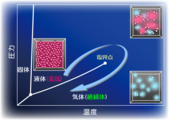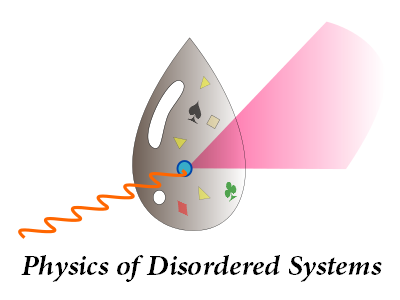In nature there are a variety of physical phenomena that form the hierarchical structure, ranging from quantum phenomena to non-equilibrium processes. Disordered systems such as liquids and clusters (an aggregation of several to tens of thousands of atoms) are a unique system which can be a model for those phenomena in a laboratory. We are carrying out experimental investigations for liquids and clusters, which have strong correlations between electronic and ionic systems, using synchrotron radiation or X-ray free electron laser.
Physics of liquid metals
|
Among various classes of liquids, liquid metals are inherently characterized by the existence of conduction electrons and significant changes in the electronic properties occur as a function of thermodynamic variables. A liquid metal gradually loses its metallic characteristics and turns to an insulator when it is expanded up to or beyond the liquid-vapor critical point. In order to elucidate underlying microscopic physics of this metal-insulator transition, the understanding for many-body interactions among the constituents (electrons and ions) is of crucial importance. For this purpose, we are carrying out synchrotron radiation experiments for structural and electronic properties of liquid metals.
|  |
Physics of non-equilibrium clusters
|
Clusters are an isolated system where several to tens of thousands of atoms and molecules aggregate. Physical properties of clusters are strongly dependent on their size. Clusters is the system which bridges between atoms/molecules and condensed phase, is considered as a key material which can elucidate the hierarchy of materials. Because of a large fraction of the surface, atoms in a cluster are in strong heterogeneous environment, thus a research at the atomic level is required. We are carrying out experimental investigations for clusters using X-ray free electron laser, to get insight into interactions between clusters and coherent X-rays with high brightness and ultrashort pulse. Recently, we are working on the development of 3-dimensional structural analysis method of clusters and the related theme to clarify nonlinear/non-equilibrium processes of charge/energy transfer in multiply excited clusters.
|  |
